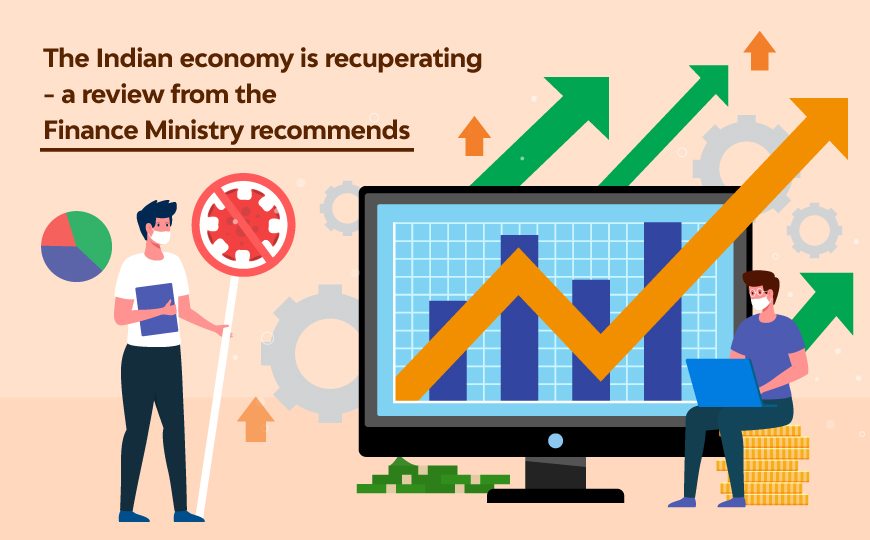
To accelerate the rate of economic growth, the Indian government has implemented major changes in the economy in the form of economic reforms. During the COVID-19 pandemic, the government implemented these changes to bring about stability in the economy. It has been a challenging task for the administration to keep up with soundness in economic growth while also dealing with the pandemic. India has achieved unparallel success in its COVID vaccination drive with its National COVID-19 immunization program being the world's largest vaccination campaign, with an unrivaled extension and reach.
The Finance Ministry directs an economic review to examine India's economic performance by providing thorough statistical data on all sectors, including industrial, agricultural, and manufacturing. As indicated by the Finance Ministry's Monthly Economic Review, tactical reforms and a speedy immunization effort have put the country making a course for recuperation by allowing the economy to surf the devastating waves of the COVID-19 pandemic.
The report further said that India was well-positioned for a quick recovery, with growth signals noticeable in every aspect of the economy. The economy had the option to explore the staggering rushes of the COVID-19 pandemic because of vital changes and new achievements in the immunization push.
The September 2021 report of the Finance Ministry's Monthly Economic Review concluded that the economy is doing well, citing relentless and stout growth in agriculture, a sharp comeback in manufacturing and industry, the revival of services activity, and upbeat revenues.
For India's economic recovery, the outside area continues to be a bright spot, with merchandise exports passing the USD 30-billion mark for the sixth month in a row in the fiscal year 2021-22, added the report.
The rate of growth of bank credit was 6.7 % Year over Year in the fortnight ended September 10, 2021, compared to 5.3 % in the previous year's corresponding period, in line with growth impulses seen across the economy, the report added.
There are obvious signs of consumer and investment demand building up in India, noting that the external debt-to-GDP ratio remains comfortable, and decreasing to 20.2 % at the end of June 2021 from 21.1 % at the end of March 2021.
Unpredictable rates in the worldwide crude oil markets, as well as upward-bound rates of edible oils and metal products, may continue to be a source of concern, as indicated by the report.
Consumer price index (CPI) inflation dropped to a four-month low of 5.3 % in August 2021, clearly demonstrating that inflationary inclinations are pandemic-prompted and transient, thanks to the reinstatement of supply chains, increased mobility, and diminishing food prices.
Government Security rates were likewise stable in September 2021, thanks to a relaxed level of systemic liquidity and an easing of inflationary pressure. In comparison to August, the 10-year yield was maintained at 6.2 %.
In August and September 2021, high-frequency economic indicators showed continued improvement in electricity consumption, rail cargo movement, e-way charges, healthy GST collections, an increase in highway toll collections, increases in air freight and passenger traffic, and a leap in digital transactions, indicating a broad-based recovery, it stated.
In this way, some of the components that kept the economy afloat during the subsequent wave were at a higher pace of vaccinations, rapid restoration of manufacturing output, and agriculture. As the second wave of the virus fades and more Indians are vaccinated against the fatal illness, the majority of financial analysts remain hopeful with regards to economic recovery in the following quarters. As things stand, India is well-positioned to meet the target, as high-frequency economic indicators point to a positive outcome.
© 2020 CREDENCE CORPORATE SOLUTIONS PVT. LTD. | Website by Wits Digtal Pvt. Ltd.
Leave a Comment